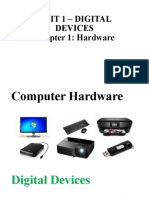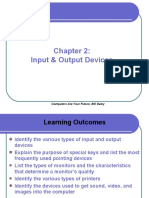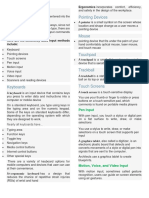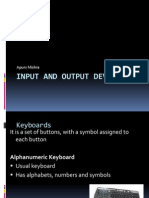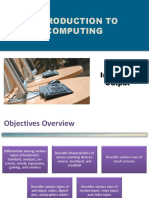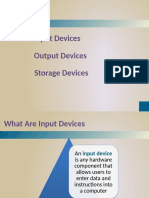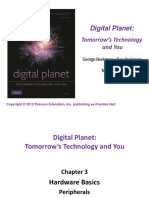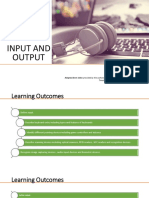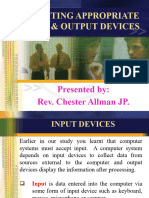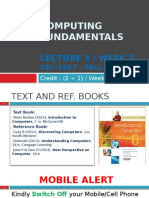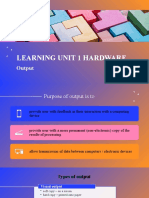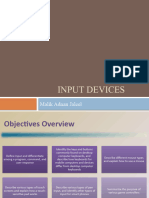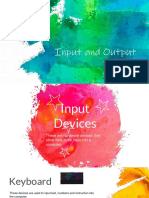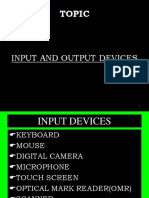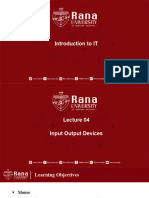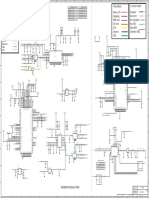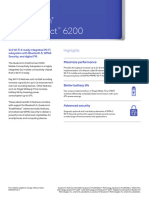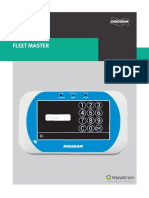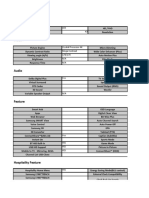0% found this document useful (0 votes)
28 views38 pagesChapter 4
Chapter 4 covers various input and output devices used in computing, including keyboards, pointing devices, scanners, digital cameras, and audio input/output devices. It explains their functions, characteristics, and the technologies behind display devices and printers. The chapter also highlights the importance of these devices in capturing and presenting data effectively.
Uploaded by
Samar AliCopyright
© © All Rights Reserved
We take content rights seriously. If you suspect this is your content, claim it here.
Available Formats
Download as PPTX, PDF, TXT or read online on Scribd
0% found this document useful (0 votes)
28 views38 pagesChapter 4
Chapter 4 covers various input and output devices used in computing, including keyboards, pointing devices, scanners, digital cameras, and audio input/output devices. It explains their functions, characteristics, and the technologies behind display devices and printers. The chapter also highlights the importance of these devices in capturing and presenting data effectively.
Uploaded by
Samar AliCopyright
© © All Rights Reserved
We take content rights seriously. If you suspect this is your content, claim it here.
Available Formats
Download as PPTX, PDF, TXT or read online on Scribd
/ 38







